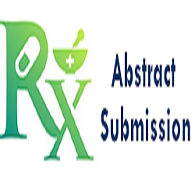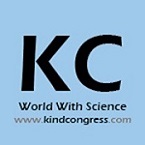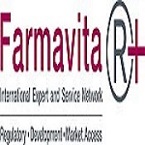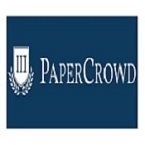Recommended Global Immunology Webinars & Conferences
Asia Pacific & Middle East
Antibiotics 2026
About Conference
After a successful conference of Antibiotics 2025, we are currently bringing forth “13th World Congress and Exhibition on Antibiotics and Antibiotic Resistance” (Antibiotics 2025) slated on April 16-17, 2026 at London, UK. Antibiotics 2026 welcomes attendees, participants, students, speakers, organizing committee members, delegates from all over the world. We welcome you and appreciate your participation at the London, UK and it will be organized around the theme" Wise Antibiotic Use: Protecting Against Resistance" which includes prompt Keynote presentations, Oraltalks, Poster presentations and Exhibitions.
Antibiotics 2026 will be organizing offering best platform to all academicians, researchers, industry professional, and scholars. It will be scheduled on wide range of topics and it will be helpful for scientific fraternity to be connected while staying at their preferred place. Join the Physical Conference organized by us and let the world know about your research and innovation. The Antibiotics 2026 conference hosting presentations from editors of eminent refereed journals, renowned and active investigators and decision makers in the field of Pharmacology, Infectious Diseases, Microbiology, Immunology, Bacteriology and many more. Antibiotics 2026 Organizing Committee also invites young investigators at each and every career stage to submit abstracts reporting their latest scientific research in oral and poster sessions.
Antibiotics 2026 is intended to honour prestigious award for talented Young researchers, Scientists, Young Investigators, Post-Graduate students, Post-doctoral fellows, Trainees, junior faculty in recognition of their outstanding contribution towards the conference theme. The Young Scientist Awards make every effort in providing a strong professional development opportunity for early career academicians by meeting experts to exchange and share their experiences on all aspects of Pharmacology.
Young Research’s Awards at Antibiotics 2026 for the Nomination:
Young Researcher Forum - Outstanding Masters/Ph.D./Post Doctorate thesis work Presentation and only 25 presentations acceptable at the Antibiotics 2026
YRF Registration benefits:
- Our conferences provide best Platform for your research through oral presentations.
- Share the ideas with both eminent researchers and mentors.
- Young Scientist Award reorganization certificate and memento to the winners
- Young Scientists will get appropriate and timely information by this Forum.
- Platform for collaboration among young researchers for better development
- Award should motivate participants to strive to realize their full potential which could in turn be beneficial to the field as whole.
Why to attend?
Antibiotics 2026 is a platform to discuss and learn about the latest advancements in the field of Antibiotics and Antibiotic Resistance as the world’s consideration turned regarding the urgency of new antibiotics as the antimicrobial resistance is growing day by day. Many developed nations and International health organizations are trying to focus of the current situation and making new policies to prevent the adverse effects of Antibiotic resistance.
The 2-day conference gathers Researchers, academia, labs, Drug Manufacturers, government agencies, health professionals, hospitals, young investigators, Pharma and labs and presents their opinions through key notes, and case study presentations. This conference lays a platform for all the researchers working in the field of Antibiotics to know the latest developments and the current situation of the Antibiotic resistance problem.
Sessions & Tracks
Track: 1 Antibiotics
Antibiotics are a type of antimicrobials that are used in treatment and prevention of bacterial infections. They may kill or inhibit the growth of bacteria. Many antibiotics are also effective against protozoans and fungi; some are toxic to humans and animals also, even when given in therapeutic dosage. Antibiotics are not effective against viruses such as common cold or influenza, and may be harmful when taken inappropriately. Physicians must ensure the patient has a bacterial infection before prescribing antibiotics.
- Introduction to antibiotic uses and challenges
- Basic principles of prescribing antibiotics
- Mechanisms of bacteriostatic or bactericidal action
- Antibiotic Use Linked to Type 1 Diabetes Diagnosis
Related Societies: Alliance for the Prudent Use of Antibiotics (APUA), Centres for Disease Control and Prevention (CDC), U.S. Food and Drug Administration (FDA), Transatlantic task force on urgent antimicrobial resistance (TATFAR), Global Antibiotic Resistance Partnership (GARP), Centre for a Livable Future (CLF), Infectious Diseases Society of America, The World Alliance against Antibiotic Resistance (WAAAR)
Track: 2 Mechanisms and Evolution of Antibiotic Resistance
Antibiotic resistance is a growing concern in the field of medicine and public health. It refers to the ability of bacteria to survive and grow in the presence of antibiotics that were originally effective in killing or inhibiting their growth. The mechanism and evolution of antibiotic resistance is a complex process that involves genetic changes in bacteria over time. The evolution of antibiotic resistance is driven by the selective pressure imposed by the use of antibiotics. When antibiotics are introduced into an ecosystem, they kill susceptible bacteria, but some bacteria may possess resistance genes that allow them to survive and reproduce. These resistant bacteria then have a selective advantage over susceptible bacteria, leading to the proliferation of antibiotic-resistant strains. Additionally, the misuse and overuse of antibiotics in both human and animal populations contribute to the rapid evolution of resistance. The constant evolution of antibiotic resistance poses a significant threat to human health, as it limits the effectiveness of antibiotics in treating infections. It is crucial for healthcare providers to adopt responsible antibiotic prescribing practices and for researchers to develop new antibiotics and alternative treatment strategies to combat this growing problem.
Related Societies: Antibiotic Research UK (ANTRUK), BEAM Alliance (Biotechs from Europe innovating in anti-microbial resistance), ReAct – Action on Antibiotics, Australian Society of Antimicrobials, Australasian Society for Infectious Diseases, The Philippine Society for Microbiology, Israel Society for Microbiology (ISM), Chinese Society for Microbiology (CSM), Iranian Society of Microbiology, British Society for Antimicrobial Chemotherapy
Track: 3 Antibiotic-resistant Bacterial infections
Antibiotic-resistant bacterial infections are a serious and growing global health concern. These infections occur when bacteria become resistant to the drugs that were originally designed to kill or inhibit their growth. As a result, the effectiveness of antibiotics in treating these infections is greatly reduced, leading to prolonged illness, increased healthcare costs, and higher mortality rates. There are several factors contributing to the rise of antibiotic-resistant bacterial infections. The misuse and overuse of antibiotics, both in healthcare settings and in agriculture, play a significant role. When antibiotics are used unnecessarily or inappropriately, bacteria have more opportunities to develop resistance. Additionally, the spread of resistant bacteria between individuals and healthcare facilities can occur, further exacerbating the problem. Common infections such as urinary tract infections, pneumonia, and bloodstream infections are increasingly becoming more difficult to treat due to antibiotic resistance. In some cases, there may be limited or no effective treatment options available, leading to increased morbidity and mortality rates.
Related Societies: Alliance for the Prudent Use of Antibiotics (APUA), Centres for Disease Control and Prevention (CDC), U.S. Food and Drug Administration (FDA), Transatlantic task force on urgent antimicrobial resistance (TATFAR), Global Antibiotic Resistance Partnership (GARP), Centre for a Livable Future (CLF), Infectious Diseases Society of America, The World Alliance against Antibiotic Resistance (WAAAR)
Track: 4 Microorganisms Producing Antibiotics
Microorganisms have long been recognized as a valuable source of antibiotics. Many bacteria and fungi have the ability to produce compounds that inhibit the growth of other microorganisms, providing them with a competitive advantage in their environment. These antibiotic-producing microorganisms have played a crucial role in the development of antibiotics that are used to treat bacterial infections in humans. Bacteria such as Streptomyces and Bacillus, as well as fungi like Penicillium and Aspergillus, are well-known producers of antibiotics. These microorganisms have the genetic machinery to synthesize complex molecules with antimicrobial properties. Through a process of biosynthesis, they produce and release these antibiotics into their surroundings. The discovery and isolation of antibiotic-producing microorganisms has been essential in the development of new antibiotics. Scientists have been able to study the chemical structures and mechanisms of action of these natural compounds, leading to the synthesis of modified or more potent versions of antibiotics.
Related Societies: Antibiotic Research UK (ANTRUK), BEAM Alliance (Biotechs from Europe innovating in anti-microbial resistance), ReAct – Action on Antibiotics, Australian Society of Antimicrobials, Australasian Society for Infectious Diseases, The Philippine Society for Microbiology, Israel Society for Microbiology (ISM), Chinese Society for Microbiology (CSM), Iranian Society of Microbiology, British Society for Antimicrobial Chemotherapy
Track: 5 Drug Discovery and Novel Delivery Technologies
In the prior most drugs have been invented either by identifying the active ingredient from traditional remedies or by serendipitous discovery. A new access has been to recognize how disease and infection are controlled at the molecular and physiological level and to mark specific entities based on this knowledge. The process of drug discovery involves the identification of candidates, characterization, screening, synthesis, and assays for therapeutic efficacy. Evolution of an existing drug molecule from a ordinary form to a novel delivery system can significantly improve its performance in terms of patient compliance, efficacy and safety. These days, drug delivery companies are engaged in the development of numerous platform technologies to get ambitious advantage, extend patent life, and increase market share of their products. Formerly a compound has displayed its value in these tests; it will begin the process of drug development prior to clinical trials.
- Policies to stimulate drug development and discovery
- Role of computational biology
- Ligand binding studies
- Transport (simulation studies)
- Molecule mediating transport
Related Societies: Alliance for the Prudent Use of Antibiotics (APUA), Centres for Disease Control and Prevention (CDC), U.S. Food and Drug Administration (FDA), Transatlantic task force on urgent antimicrobial resistance (TATFAR), Global Antibiotic Resistance Partnership (GARP), Centre for a Livable Future (CLF), Infectious Diseases Society of America, The World Alliance against Antibiotic Resistance (WAAAR)
Track: 6 Antimicrobial Therapy
An antimicrobial therapy kills or inhibits the growth of microorganisms such as bacteria, fungi, or protozoans. Antimicrobial agents are some of the most widely, and often used therapeutic drugs worldwide. It contributes significantly to the quality of life of many people and reduces the morbidity and mortality due to infectious disease. The remarkable success of antimicrobial therapy has been achieved with comparatively little toxicity and expense
Related Societies: Alliance for the Prudent Use of Antibiotics (APUA), Centres for Disease Control and Prevention (CDC), U.S. Food and Drug Administration (FDA), Transatlantic task force on urgent antimicrobial resistance (TATFAR), Global Antibiotic Resistance Partnership (GARP), Centre for a Livable Future (CLF), Infectious Diseases Society of America, The World Alliance against Antibiotic Resistance (WAAAR)
Track: 07 Antibiotic Resistance: Opportunities and Challenges
Certain bacterial infections now oppose all antibiotics. The resistance problem may be reversible, but only if society begins to acknowledge how the drugs affect "good" bacteria as well as "bad". Historically, most antibacterials were used in hospitals, where they were integrated into surgical clothes and soaps to limit the spread of infection. More recently, however, those substances (including triclosan, triclocarbon and such quaternary ammonium compounds as benzalkonium chloride) have been mixed into lotions, dish-washing detergents and soaps meant for general consumers. They have also been impregnated into such items as cutting boards, toys, high chairs and mattress pads.
- Antibiotics and alternatives
- Grand challenges – antimicrobial resistance
- Systemic intervention – values, conflict and blue room resolution
- Intervention against antimicrobial resistance – approaches and implementation
Related Societies: Alliance for the Prudent Use of Antibiotics (APUA), Centres for Disease Control and Prevention (CDC), U.S. Food and Drug Administration (FDA), Transatlantic task force on urgent antimicrobial resistance (TATFAR), Global Antibiotic Resistance Partnership (GARP), Centre for a Livable Future (CLF), Infectious Diseases Society of America, The World Alliance against Antibiotic Resistance (WAAAR)
Track: 08 Antibiotic Prophylaxis
Antimicrobial prophylaxis is generally used by clinicians for the prevention of numerous infectious diseases. Optimal antimicrobial agents for prophylaxis should be nontoxic, inexpensive, bactericidal and active against the typical pathogens that can motive surgical site infection postoperatively. To maximize its effectiveness, intravenous perioperative prophylaxis should be carried out within 30 to 60 minutes before the surgical incision. Antimicrobial prophylaxis should be of short time to downturn toxicity and antimicrobial resistance and to reduce cost.
- Prevention of microbial infection
- Antibiotic selection
- Advantages of long-acting antibiotics
- Antibiotics in aquaculture
Related Societies: Antibiotic Research UK (ANTRUK), BEAM Alliance (Biotechs from Europe innovating in anti-microbial resistance), ReAct – Action on Antibiotics, Australian Society of Antimicrobials, Australasian Society for Infectious Diseases, The Philippine Society for Microbiology, Israel Society for Microbiology (ISM), Chinese Society for Microbiology (CSM), Iranian Society of Microbiology, British Society for Antimicrobial Chemotherapy
Track: 09 Antimicrobial Peptides
Antimicrobial peptides (AMPs), also called Host Defence Peptides (HDPs) are part of the innate immune response found among all classes of life. AMPs have a broad spectrum of targeted organisms ranging from viruses to parasites. These peptides are potent, broad spectrum antibiotics which demonstrate potential as novel therapeutic agents. Unlike the majority of conventional antibiotics it appears that antimicrobial peptides frequently destabilize biological membranes, can form transmembrane channels, and may also have the ability to enhance immunity by functioning as Immunomodulatory
Related Societies: Antibiotic Research UK (ANTRUK), BEAM Alliance (Biotechs from Europe innovating in anti-microbial resistance), ReAct – Action on Antibiotics, Australian Society of Antimicrobials, Australasian Society for Infectious Diseases, The Philippine Society for Microbiology, Israel Society for Microbiology (ISM), Chinese Society for Microbiology (CSM), Iranian Society of Microbiology, British Society for Antimicrobial Chemotherapy
Track: 10 Antibiotics for Various Diseases and Infections
Antibiotics are amidst the most regularly recommended medications in modern medicine. Antibiotics are useless against viral infections. When you take antibiotics, follow the guidelines carefully. It is important to finish your medicine even if you feel improved. If you stop treatment too soon, some bacteria may survive and re-infect you. Do not save antibiotics for later or use someone else's prescription
- Novel antibacterial drug discovery
- Skin and soft tissue infections
- Urinary tract infections
- Acute diarrhea, gastroenteritis, and food poisoning (Campylobacteriosis)
- Common gynecologic Infections
- Fever and apparent acute central nervous system Infection
Related Societies: Alliance for the Prudent Use of Antibiotics (APUA), Centres for Disease Control and Prevention (CDC), U.S. Food and Drug Administration (FDA), Transatlantic task force on urgent antimicrobial resistance (TATFAR), Global Antibiotic Resistance Partnership (GARP), Centre for a Livable Future (CLF), Infectious Diseases Society of America, The World Alliance against Antibiotic Resistance (WAAAR)
Track: 11 Pharmacology & Toxicology:
Pharmacology and toxicology are two closely related fields that study the effects of drugs and other chemicals on living organisms. Pharmacology focuses on understanding how drugs interact with the body to produce therapeutic effects. It involves studying drug absorption, distribution, metabolism, and excretion, as well as their mechanisms of action and potential side effects. Pharmacologists also investigate drug-drug interactions and develop new medications to treat various medical conditions. Toxicology, on the other hand, examines the adverse effects of chemicals on living organisms. It involves studying the toxic properties of substances, including drugs, environmental pollutants, and industrial chemicals. Toxicologists aim to understand the mechanisms of toxicity, identify potential hazards, and evaluate the risks associated with exposure to these substances. They also develop strategies to prevent or minimize toxic effects and ensure the safety of drugs and other products.
Related Societies: Alliance for the Prudent Use of Antibiotics (APUA), Centres for Disease Control and Prevention (CDC), U.S. Food and Drug Administration (FDA), Transatlantic task force on urgent antimicrobial resistance (TATFAR), Global Antibiotic Resistance Partnership (GARP), Centre for a Livable Future (CLF), Infectious Diseases Society of America, The World Alliance against Antibiotic Resistance (WAAAR)
Track: 12 Antibiotics: In Pregnancy and Lactation
Antibiotics are frequently recommended during pregnancy. The specific medication must be chosen carefully, however. Some antibiotics are prescribed to take during pregnancy, while others are not. Safety depends on various factors, including the type of antibiotic, when in pregnancy you take the antibiotic, how much you take and for how long. Antibiotics normally advised safe during pregnancy: Ampicillin, Amoxicillin, Clindamycin, Erythromycin, Penicillin, Nitrofurantoin. Despite there's no direct clue that these antibiotics cause birth defects, additional research is needed. In the interim, use of these medications is still assured in some cases.
- Safe use of antiâ€infective agents
- Current investigations in broad spectrum antibiotics
- Antibiotics and neurological damage
Related Societies: Antibiotic Research UK (ANTRUK), BEAM Alliance (Biotechs from Europe innovating in anti-microbial resistance), ReAct – Action on Antibiotics, Australian Society of Antimicrobials, Australasian Society for Infectious Diseases, The Philippine Society for Microbiology, Israel Society for Microbiology (ISM), Chinese Society for Microbiology (CSM), Iranian Society of Microbiology, British Society for Antimicrobial Chemotherapy
Track: 13 Pharmacokinetics and Pharmacodynamics of Antimicrobial Drugs
The pharmacodynamics of an antimicrobial drug relates its pharmacokinetics to the time course of the antimicrobial effects at the site of the infection. Knowledge of the drug's antimicrobial pharmacodynamics effects provides a more rational basis for determination of optimal dosing regimens in terms of the dose and the dosing interval than do the minimal inhibitory concentrations (MICs) and minimal bactericidal concentrations (MBCs) determined in vitro. This session mainly focus on pharmacokinetics, antimicrobial pharmacodynamics, the effect of pharmacodynamics on the emergence of resistant bacterial subpopulations, and the development of pharmacodynamics breakpoints for use in the design of trials of these drugs and in the treatment of infected patients
Related Societies: Antibiotic Research UK (ANTRUK), BEAM Alliance (Biotechs from Europe innovating in anti-microbial resistance), ReAct – Action on Antibiotics, Australian Society of Antimicrobials, Australasian Society for Infectious Diseases, The Philippine Society for Microbiology, Israel Society for Microbiology (ISM), Chinese Society for Microbiology (CSM), Iranian Society of Microbiology, British Society for Antimicrobial Chemotherapy
Track: 14 Immunology & Vaccines:
Immunology and vaccines are closely interconnected, as vaccines harness the principles of immunology to protect individuals from infectious diseases. Immunology is the branch of science that focuses on understanding the immune system and its response to foreign substances, including pathogens. It studies how the immune system recognizes and eliminates pathogens, as well as how it develops memory to provide long-lasting protection against future infections. Vaccines, on the other hand, are biological preparations that stimulate the immune system to produce a protective response without causing the actual disease. They contain weakened or inactivated forms of pathogens, specific antigens, or genetic material that code for antigens. When administered, vaccines trigger an immune response, leading to the production of antibodies and activation of immune cells. This immune response enables the immune system to recognize and mount a rapid and effective defense against the actual pathogen if encountered in the future.
Related Societies: Alliance for the Prudent Use of Antibiotics (APUA), Centres for Disease Control and Prevention (CDC), U.S. Food and Drug Administration (FDA), Transatlantic task force on urgent antimicrobial resistance (TATFAR), Global Antibiotic Resistance Partnership (GARP), Centre for a Livable Future (CLF), Infectious Diseases Society of America, The World Alliance against Antibiotic Resistance (WAAAR)
Track: 15 Infectious Diseases:
Infectious diseases are illnesses caused by pathogenic microorganisms such as viruses, bacteria, parasites, or fungi that can be transmitted from one person to another either directly or indirectly (vector-borne). The invasion of disease-causing pathogens into an organism's body tissues, their growth, and the host tissues' response to the infectious agents and the toxins they produce are all considered to be infections. A condition brought on by an infection is referred to as an infectious disease, often known as a transmissible or communicable sickness. There are many different pathogens that can cause infections, but bacteria and viruses are the most prevalent ones. Hosts' immune systems can aid in their ability to combat disease. The medical specialty that deals with infections is referred to as infectious disease.
- Influenza
- Cryptosporidiosis
- Vector-Borne Diseases
- Legionnaires’ Disease
- Human Metapneumovirus
- Antibiotic-Resistant Diseases
- Valley Fever
- Immunity and Infectious Diseases
Related Societies: Antibiotic Research UK (ANTRUK), BEAM Alliance (Biotechs from Europe innovating in anti-microbial resistance), ReAct – Action on Antibiotics, Australian Society of Antimicrobials, Australasian Society for Infectious Diseases, The Philippine Society for Microbiology, Israel Society for Microbiology (ISM), Chinese Society for Microbiology (CSM), Iranian Society of Microbiology, British Society for Antimicrobial Chemotherapy
Track: 16 Developing Alternatives to Antibiotics
Alternatives to antibiotics are broadly defined as any substance that can be substituted for therapeutic drugs that are increasingly becoming ineffective against pathogenic bacteria due to antimicrobial resistance. Although antibiotics remain an essential tool for treating animal diseases on the farm, the availability of effective medical interventions to prevent and control animal diseases is one of the most significant challenges facing veterinary medicine in the 21st century. Phytochemicals as antibiotic alternatives to promote growth and enhance host health. Innovative drugs, chemicals, and enzymes within the animal production chain. Vaccines as alternatives to antibiotics for food producing animals. Also recent research provides numerous possibilities for the application nanomaterials in broad-spectrum eradication of pathogenic bacteria with many applications such as skin pathogen infection, implant sterilization, and wastewater treatment.
Related Societies: Alliance for the Prudent Use of Antibiotics (APUA), Centres for Disease Control and Prevention (CDC), U.S. Food and Drug Administration (FDA), Transatlantic task force on urgent antimicrobial resistance (TATFAR), Global Antibiotic Resistance Partnership (GARP), Centre for a Livable Future (CLF), Infectious Diseases Society of America, The World Alliance against Antibiotic Resistance (WAAAR)
Track: 17 The Next Generation Approach of Antibiotics
As research into antibiotic resistance expands, it is important to adopt an explicitly proactive approach to antibiotic resistance identification and surveillance, as well as antibiotic therapy development. This proactive approach involves using a combination of functional metagenomics, next-generation sequencing and cutting-edge computational methods to monitor the evolution and dissemination of resistance before a given resistance determinant emerges in a pathogen or in the clinical setting, as well as proactively developing next-generation therapies that target these resistance determinants. Recent advances in the field highlight the promise that the next generation of resistome studies hold for characterizing and countering emerging resistance threats
Related Societies: Alliance for the Prudent Use of Antibiotics (APUA), Centres for Disease Control and Prevention (CDC), U.S. Food and Drug Administration (FDA), Transatlantic task force on urgent antimicrobial resistance (TATFAR), Global Antibiotic Resistance Partnership (GARP), Centre for a Livable Future (CLF), Infectious Diseases Society of America, The World Alliance against Antibiotic Resistance (WAAAR)
Track: 18 Micro Organisms in Recent Drug Discovery
Environmental microbes are a leading source of drug discovery, and several microbial products ( anti-tumour products, antibiotics, immunosuppressant’s and others) are used frequently for human therapies. Most of these products were accessed from cultivable (<1%) environmental microbes, means that the large number of microbes were not targeted for drug discovery. With the onset of new and emerging technologies, we are poised to harvest novel drugs from the so-called 'uncultivable' microbes. Multidisciplinary way of linking different technologies can assist and reform drug discovery from uncultivable microbes and inspect the current cramp of technologies and scenario to swamped such constraints that might further expand the promise of drugs from environmental microbes
- Novel species discovery
- Micos from different areas (patients, geographical locations)
- Genetically modified organisms
Related Societies: Antibiotic Research UK (ANTRUK), BEAM Alliance (Biotechs from Europe innovating in anti-microbial resistance), ReAct – Action on Antibiotics, Australian Society of Antimicrobials, Australasian Society for Infectious Diseases, The Philippine Society for Microbiology, Israel Society for Microbiology (ISM), Chinese Society for Microbiology (CSM), Iranian Society of Microbiology, British Society for Antimicrobial Chemotherapy
Track: 19 Current Research in Antibiotic Resistance
Antibiotic overuse and misuse has led to a growing number of bacteria in humans, animals and the environment that are resistant to life-saving antimicrobial therapies. Urgent action is needed to halt the development of resistance, and to accelerate new treatments for bacterial infection. Research includes epidemiology of both Gram-negative and Gram-positive infections, genetic mechanisms of resistance, evolution and transmission in the hospital setting, as well as the community, and antimicrobial stewardship
Related Societies: Antibiotic Research UK (ANTRUK), BEAM Alliance (Biotechs from Europe innovating in anti-microbial resistance), ReAct – Action on Antibiotics, Australian Society of Antimicrobials, Australasian Society for Infectious Diseases, The Philippine Society for Microbiology, Israel Society for Microbiology (ISM), Chinese Society for Microbiology (CSM), Iranian Society of Microbiology, British Society for Antimicrobial Chemotherapy
Track: 20 New antibiotics and non-antibiotic approaches
New antibiotics and non-antibiotic approaches are crucial in the fight against antibiotic resistance, a global health threat. Antibiotic resistance occurs when bacteria evolve and become resistant to the drugs designed to kill them. This makes it harder to treat infections and increases the risk of severe complications. The development of new antibiotics is essential to combat resistant bacteria. Scientists are constantly searching for novel molecules and compounds that can effectively target and kill bacteria. These new antibiotics aim to bypass existing resistance mechanisms and provide alternative treatment options. In addition to new antibiotics, non-antibiotic approaches are being explored to tackle bacterial infections. One such approach is the use of bacteriophages, which are viruses that infect and kill bacteria. Bacteriophage therapy shows promise in targeting specific bacterial strains and reducing the risk of resistance. Other non-antibiotic approaches include immunotherapy, which enhances the body's immune response to fight infections, and the use of antimicrobial peptides, which are naturally occurring molecules that can kill bacteria. Combining these new antibiotics and non-antibiotic approaches with responsible antibiotic use and infection prevention measures can help mitigate the spread of antibiotic resistance.
Related Societies: Alliance for the Prudent Use of Antibiotics (APUA), Centres for Disease Control and Prevention (CDC), U.S. Food and Drug Administration (FDA), Transatlantic task force on urgent antimicrobial resistance (TATFAR), Global Antibiotic Resistance Partnership (GARP), Centre for a Livable Future (CLF), Infectious Diseases Society of America, The World Alliance against Antibiotic Resistance (WAAAR)
Track: 21 Modern Antibiotics for Various Diseases and Infections
Modern antibiotics have revolutionized the field of medicine, providing effective treatment options for various diseases and infections. These powerful drugs target and kill bacteria, helping to alleviate symptoms and prevent complications. For common bacterial infections such as urinary tract infections, respiratory infections, and skin infections, antibiotics like penicillin, cephalosporin’s, and macrolides are often prescribed. These antibiotics work by interfering with the bacteria's ability to grow and reproduce, ultimately leading to their destruction. In recent years, there have been notable advancements in antibiotic development, including the introduction of broad-spectrum antibiotics that can target a wide range of bacteria. Fluoroquinolones and carbapenems are examples of such antibiotics, often used to treat severe infections caused by multidrug-resistant bacteria. Furthermore, antibiotics like tetracyclines and sulfonamides are commonly used to treat acne and other skin conditions caused by bacteria.
Related Societies: Antibiotic Research UK (ANTRUK), BEAM Alliance (Biotechs from Europe innovating in anti-microbial resistance), ReAct – Action on Antibiotics, Australian Society of Antimicrobials, Australasian Society for Infectious Diseases, The Philippine Society for Microbiology, Israel Society for Microbiology (ISM), Chinese Society for Microbiology (CSM), Iranian Society of Microbiology, British Society for Antimicrobial Chemotherapy
Track: 22 Clinical Trials of Antibiotics
Prescribing doctors are, progressively, using clinical trial data as a major source of information for evidence-based medicine for the remedy of infectious diseases, as in other clinical disciplines. However, it may be difficult to excerpt from these data the material that is needed for the management of the individual patient. At the same time, clinical trial testimony have been used, probably satisfactorily, in the process of drug registration, and the pharmaceutical industry has spent progressively large amount of money to satisfy the needs of this process. In the face of all these problems, switch in the way antibiotic clinical trials are designed and performed are clearly necessary, although this must not disturb the balance so far as to restore them less useful for those who currently derive greatest benefit from them.
- Evaluations of efficacy
- Evaluations of safety
- Clinical biochemistry & clinical microbiology
Related Societies: Alliance for the Prudent Use of Antibiotics (APUA), Centres for Disease Control and Prevention (CDC), U.S. Food and Drug Administration (FDA), Transatlantic task force on urgent antimicrobial resistance (TATFAR), Global Antibiotic Resistance Partnership (GARP), Centre for a Livable Future (CLF), Infectious Diseases Society of America, The World Alliance against Antibiotic Resistance (WAAAR)
Track: 23 Prevention and Control of Antibiotic Resistance
Antimicrobial resistance is a complex problem with many diverse contributing factors. It is major cause of health concerns adding cost to oneself and to the community, directly or indirectly. Prevention is still the best tool to reduce the infection spread and thereby AMR. Along with rational use of existing antimicrobial drugs, development of new effective compounds and new diagnostic technology is the need. Joint efforts from patients, prescribers and individuals to international regulators and policy makers are needed to fight against the globally spreading antimicrobial resistance.
Related Societies: Alliance for the Prudent Use of Antibiotics (APUA), Centres for Disease Control and Prevention (CDC), U.S. Food and Drug Administration (FDA), Transatlantic task force on urgent antimicrobial resistance (TATFAR), Global Antibiotic Resistance Partnership (GARP), Centre for a Livable Future (CLF), Infectious Diseases Society of America, The World Alliance against Antibiotic Resistance (WAAAR)
Market Analysis
Antibiotics 2026 Market Analysis
The global antibiotics market was valued at USD 42,653.89 million in 2018, and is estimated to be valued at USD 58,142.92 million in 2024, witnessing a CAGR of 4.7%.The Antibacterial Drugs market is expected to cross US$ 48 Billion by 2025 growing at a CAGR of 1% during the given forecast period. Rising pervasiveness of irresistible illnesses particularly in creating locales, for example, Asia Pacific and MEA is foreseen to contribute towards showcase development.
The report covers detailed competitive outlook including the market share and company profiles of the key participants operating in the global market. Key players include Allergen plc, AstraZeneca plc, Bayer AG, Bristol-Myers Squibb Company, Eli Lilly & Co., Forest Laboratories, Inc., GlaxoSmithKline plc, Merck & Co., Inc. Novartis AG, Pfizer, Inc., and Sanofi.
The antibiotics market generated sales of US$42 billion in 2009 globally, representing 46% of sales of anti-infective agents (which also include antiviral drugs and vaccines) and 5% of the global pharmaceutical market. However, the antibiotics market is maturing; it showed an average annual growth of 4% over the past 5 years, compared with a growth of 16.7% and of 16.4% for antiviral drugs and vaccines, respectively.
Over 15.0% of the passing’s, in kids underneath the age of five, are assessed to be because of pneumonia and as indicated by the insights given by the WHO around 9.2 million passing’s were recorded in 2015. Like tuberculosis, the most elevated commonness of the sickness is recognized to be in the South Asian and Sub-Saharan locales. At present, the required anti-infection treatment is accessible just to 33% of the tainted populace, subsequently expanding the illness trouble.
The major driving factors of Antibacterial Drugs Market are as follows:
- There is a very high prevalence of infectious diseases.
- The research and development activities have increased.
- Product differentiation through various methods.
- Increased government support.
The restraining factors of Antibacterial drugs Market is as follows:
- Rise in drug resistant species.
- Launch of the generic drugs.
- Patent expiry
Importance and Scope
Antibiotic resistance is rising to dangerously high levels in all parts of the world. New resistance mechanisms are emerging and spreading globally, threatening our ability to treat common infectious diseases. A growing list of infections such as pneumonia, tuberculosis, blood poisoning, gonorrhoea, and foodborne diseases are becoming harder, and sometimes impossible, to treat as antibiotics become less effective.
Where antibiotics can be bought for human or animal use without a prescription, the emergence and spread of resistance is made worse. Similarly, in countries without standard treatment guidelines, antibiotics are often over-prescribed by health workers and veterinarians and over-used by the public. Without urgent action, we are heading for a post-antibiotic era, in which common infections and minor injuries can once again kill.
Target Audience
- Healthcare Students, Scientists, and professors
- Doctors
- Microbiologist
- Infectious diseases specialists
- Antimicrobial scientists
- Pharmacists
- Public health experts
- Laboratorist
- Bacteriology Researchers
- Faculty of bacteriology and infectious diseases
- Medical Colleges
- Healthcare Associations and Societies
- Business Entrepreneurs
Related Companies
- Gilead Sciences
- Pfizer
- Abbott Laboratories
- Merck & Co
- Eli Lilly
- Astellas Pharma
- Teva Pharmaceutical Industries
- Boehringer Ingelheim
- Roche
- Mylan
- 3-D Matrix
- Agilent
- BeiGene
- BioDuro
- Fosun Pharma
Past Conference Report
Past Conference Report
Antibiotics 2025
We gratefully thank all our wonderful Speakers, Conference Attendees, Students, Media Partners, Associations and Exhibitors for making Antibiotics 2025 Conference the best ever!
The 12th World Congress and Exhibition on Antibiotics and Antibiotic Resistance, hosted by the Conference Series llc LTD was held during April 14-15, 2025 Paris,France as Webinar based on the theme “Innovations and Challenges in Antimicrobial Research". Benevolent response and active participation were received from the Organizing Committee Members along with Scientists, Researchers, Students and leaders from various fields of Pharmacology, Biotechnology, Microbiology, Pharmacy, Toxicology, Chemistry who made this event a grand success.
Conference Series expresses its gratitude to the conference Moderator, namely Patricia, Pharmacovigilance Program Coordinator.
The conference was initiated with the Honourable presence of the Keynote forum. The list includes:
Dr. Jerry T Thornthwaite, Cancer Research Institute of West Tennessee, USA
Dr. John James Stewart, Cadwell FiberCell Systems Inc, USA
Dr. Sunil Palchaudhuri, Wayne State University School of Medicine, USA
Dr. Reza Nassiri Michigan, State University, USA
And delegates and students more…
The meeting reflected various sessions, in which discussions were held on the following major scientific tracks:
- Antibiotics
- The Emergence of Antimicrobial Resistance
- Antibiotic Resistance: Opportunities and Challenges
- Different Types of Antibiotics
- Applications of Antibiotics
- Antibiotics for Various Diseases and Infections
- Antibiotic Prophylaxis
- Antibiotics: In Pregnancy and Lactation
- Antibiotics in Different Industries
- Drug Discovery and Novel Delivery Technologies
- Antibiotics for Emerging and Re-emerging Diseases
- Micro Organisms in Recent Drug Discovery
- Clinical Trials of Antibiotics
- Antibiotics and Mechanism of Action
- Antibiotic Regulatory Affairs
- Antibiotics: Market Analysis and Business Opportunities
- Pharmacology
- Neuro Pharmacology
- Toxicology
- Forensic Toxicology
- Molecular and Clinical Pharmacology
- Pre-clinical and Clinical Trails
- Drug Safety Testing
- Immuno Pharmacology
- Clinical Pharmacy and Pharmacotherapeutics
- Drug Screening and Discovery
- Safety Pharmacology
- Clinical Research Statistics
- Adverse Drug Reactions
- Bio Chemical Pharmacology
Conference Series Group offers it’s heartfelt our esteemed Media Partners:
Conference Locate.com; THE PHARMA WORLD; The British Society of Toxicological Pathology (BSTP); Crowd Reviews; Tabeeby; CourseForDoctors.com; and Atlas of Science
Also other eminent personalities who supported the conference by facilitating the discussion forums. Conference Series also took privilege to felicitate the Keynote Speakers, Organizing Committee Members, Chairs and Exhibitors who supported this event.
With the grand success of Antibiotics 2025, Conference Series is proud to announce the “13th World Congress and Exhibition on Antibiotics and Antibiotic Resistance” to be held during April 16-17, 2026 London,UK.
For More details visit: https://antibiotics.pharmaceuticalconferences.com/
To Collaborate Scientific Professionals around the World
Conference Date April 16-17, 2026
For Sponsors & Exhibitors
Speaker Opportunity
Useful Links
Past Conference Report
Supported By
All accepted abstracts will be published in respective Conference Series International Journals.
Abstracts will be provided with Digital Object Identifier by







